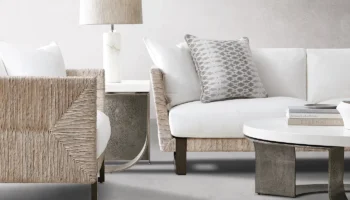At ICFF: Yale School of Architecture
The Yale School of Architecture is only one of four Design Schools to be awarded the privilege to participate at ICFF this year-an impressive feat. Eleven students contributed twelve chairs, each one intended to be housed in their larger project: a scholar center in Saqqara, Egypt.
Designed and fabricated as part of Yale's advanced architectural studio class, the chairs represent the belief that "designing a chair for a specific space or building strengthens the design intention." Working with Visiting Professor Massimo Scolari, the students learned how to fabricate a chair to scale (1:1)-in two months no less. Students worked on their chair prototypes at Yale's wood and metal shop; they also had access to CNC milling machines, a CNC controlled robot arm, and a water-jet cutter.

Carbon Fiber Chair. Designed by Dana Getman.
The idea of submitting the Yale School of Architecture's chair designs to ICFF came from student Dana Getman, who worked for Richard Meier before returning to school for a Master's degree. Meier had shown at ICFF regularly, so Getman knew about the opportunity that showing at ICFF provided. Her own design is the Carbon Fiber Chair, which is "an interpretation of the 'split and unification' theme prevalent in ancient Egyptian culture." Getman explains that "a central void along the spine bisects a carbon fiber seat designed to conform to the human body." Getman also coordinated the exhibit at ICFF, including the booth design, which is simple-quite rightly, so that the chairs get all the attention.
A second chair of particular interest is Minna Colakis' "O" Chair, inspired by an Egyptian throne: its elliptical seat is grand, curved at the ends to form armrests. The "O" Chair's oval headrest and thin legs make it appear light, almost like a Calder mobile.

O Chair. Designed by Minna Colakis.
Lorenzo Marasso's Plywood Fold Chair is "made of a single profile that through [a process of] folding provides continuity between the seat, the back rest, and the overall structure." The fold in this case does not mean that it collapses in half for easy storage; no, the fold here means that the material is folded, like dough (not that easy, so Marasso gets credit for fabrication).
Claire Axley's Gazelle Chair features curved legs inspired by ancient Egyptian furniture, though the legs seem much more recent-as sinuous and sexy as Scarlett Johanssen's lips.
Todd Fenton's Saqqara Task Chair is clean, simple, and well-engineered: "the unique water jet and welded steel clips that connect the seat to the legs allow the chair [to do without] cross bracing below the seat." Fenton's chair is certainly fit for a scholar-very smart.

Plywood Fold Chair. Designed by Lorenzo Marasso.
These various chairs illustrate that design can both look to the past and future for aesthetic inspiration and fabrication methodology. Visiting Professor Scolari's holistic approach to architecture helped these students create beautiful and functional chairs that will eventually serve as details for a larger space. And on that note, I find Yale's inclusion at ICFF to be a wonderful translation of scholarship into craftsmanship.




Leave a Reply